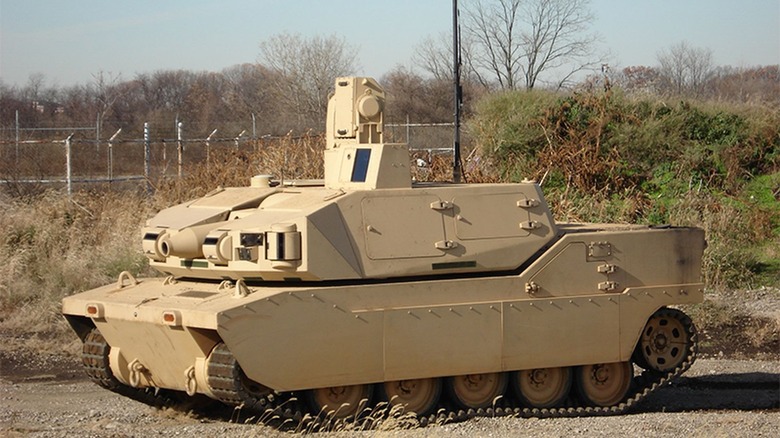This Futuristic Unmanned Tank Could Be A Game Changer For The US Army
As technology has advanced, the landscape of the modern battlefield has changed dramatically. Since 1995, the U.S. military has been using unmanned aerial vehicles (UAVs) for surveillance. The first surveillance with the MQ-9 Reaper drone occurred in Afghanistan in 2001.
The proliferation of drones has spiked since, and today, more than 11,000, are in operation globally, performing a variety of missions that include high altitude reconnaissance, battlefield surveillance, and direct assaults with onboard munitions.
But other autonomous technologies, from small, handheld personal reconnaissance drones to submersibles, and robotic mules that carry equipment for soldiers are being used and tested in hopes of not only maintaining an edge on the battlefield but keeping soldiers out of the line of fire.
Enter the Black Knight, first designed in 2005 by BAE Systems. In 2006, BAE Systems awarded the National Robotics Engineering Center (NREC) at Carnegie Mellon University a contract to create the vehicle's sensors, hardware, and computer elements to navigate itself autonomously.
It was unveiled to the public in 2006 during the Association of the United States Army annual convention in Washington, D.C., and again showcased at the 2007 Air Assault Expeditionary Assessment. While the Black Knight was greeted with enthusiasm and passed all of the field tests, the Army had poured $32 billion into its Future Combat Systems (FCS) program between 1995 and 2009 with little success.
A battlefield sidekick that can do all the things -- remotely
Though FCS was shut down in 2009, BAE and NREC continued to refine their unmanned vehicle. In 2018, they showed off a new version of the Black Knight, now branded as an Armed Robotic Combat Vehicle (ARCV), at the AUSA Global Force Symposium. The Department of Defense was intrigued enough by its potential that opted for further testing.
Through the use of color video cameras, Laser Detecting and Ranging (LADAR), FLIR thermal imaging cameras, and GPS, it can plan a route across a battlefield while avoiding any obstacles it encounters. The 300 hp Caterpillar diesel engine can power over virtually any off-road terrain at 15 mph, with a top road speed of 48 mph. Additionally, a teleoperator can see all of the vehicle's onboard systems and navigate the vehicle remotely through the Robotic Operator Control Station (ROCS) using similar guidance technology that controls UAVs.
But it's strapped with more than just surveillance and target acquisition sensors. The Black Knight is also armed with the same 25 mm cannon and coaxial 7.62 mm machine gun, making it as much an offensive weapon as a defensive one.
A C-130 transport aircraft can drop it into place and send it on its way without any human support. A final contract likely won't be awarded regarding the Army's ARCV program for a few more years, but the future is here.
